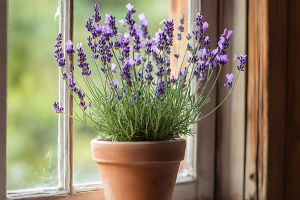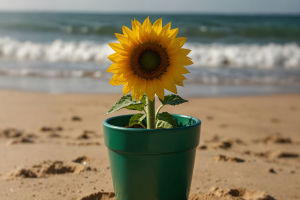When winter comes, most plants slow down, drop their leaves, or go completely dormant. But have you ever wondered—what's the most cold-resistant plant in the world?
Is there a plant tough enough to survive the freezing winds of the Arctic or even Antarctica?
Let's explore one of the planet's most impressive survivors and how it manages to live in the harshest, coldest places on Earth.
Meet the Champion: Purple Saxifrage
The title of "world's most cold-tolerant plant" often goes to the Purple Saxifrage (Saxifraga oppositifolia). This small flowering plant grows in some of the coldest regions on Earth, including the high Arctic, northern Greenland, and even parts of Antarctica.
Despite its size and fragile look, the purple saxifrage can survive temperatures as low as -60°C. Even more impressive, it can bloom while surrounded by snow!
What Makes It So Tough?
So, how does a tiny plant handle such extreme cold? It all comes down to a few smart adaptations:
• Low and compact shape: This plant grows close to the ground in a tight cushion form. This helps it avoid harsh winds and keep in warmth.
• Dark-colored flowers: Its deep purple petals help absorb sunlight quickly, raising the temperature inside the flower and making it possible to function even in freezing air.
• Slow and steady growth: It doesn't need to grow tall or fast. It uses its energy to survive instead of expanding, which works perfectly in short growing seasons.
• Internal antifreeze: Like some insects, this plant produces natural sugars and proteins that protect its cells from ice damage.
These features make it one of the best examples of life adapting to extremes.
Where Can We Find It?
Purple saxifrage grows in areas where very few plants can survive—think rocky mountain slopes, Arctic tundra, and snow-covered valleys. It's common in places like:
• Northern Canada
• Greenland
• Svalbard
• Parts of Alaska and the Himalayas
Even in these remote places, its bright blooms offer a flash of color in an otherwise icy landscape.
Other Cold-Hardy Plant Competitors
While purple saxifrage is famous, it's not the only cold-tolerant plant. A few other strong contenders include:
• Arctic Willow (Salix arctica): A dwarf shrub that grows in similar regions, with roots that go deep to find water.
• Lichens: Not technically plants, but these hardy organisms can survive on rocks and ice, often in temperatures below freezing for most of the year.
• Moss Campion (Silene acaulis): Another cushion plant that thrives in cold alpine zones and blooms in short summers.
Together, these species create life in places we'd never expect plants to grow.
Why Cold Resistance Matters
Understanding how plants survive cold helps scientists learn more about climate change, biodiversity, and even life on other planets. Some researchers study cold-hardy plants to develop frost-resistant crops for food security or to reforest extreme areas affected by global warming.
These plants also teach us something powerful: that size doesn't determine strength—adaptation does.
Could We Grow Them at Home?
If we live in cold climates, we can try growing hardy alpine plants like purple saxifrage in rock gardens or containers. They don't need rich soil or fancy care—just good drainage and a cool environment. Even in tough urban winters, they're a reminder of nature's quiet strength.
Let's Celebrate Nature's Toughest
While giant trees and tropical flowers often get the spotlight, tiny plants like the purple saxifrage deserve our admiration too. They're proof that survival isn't always about size—it's about smart design and resilience.
Have you ever seen a plant thriving in snow or on a mountain peak? Which one amazed you most? Let's share and celebrate these cold-weather warriors together!


